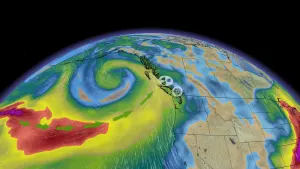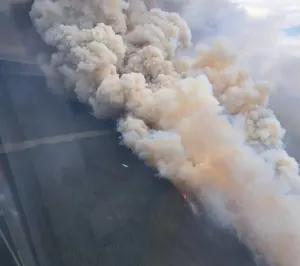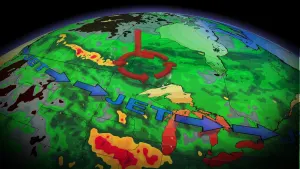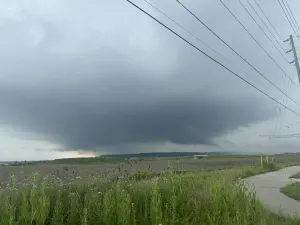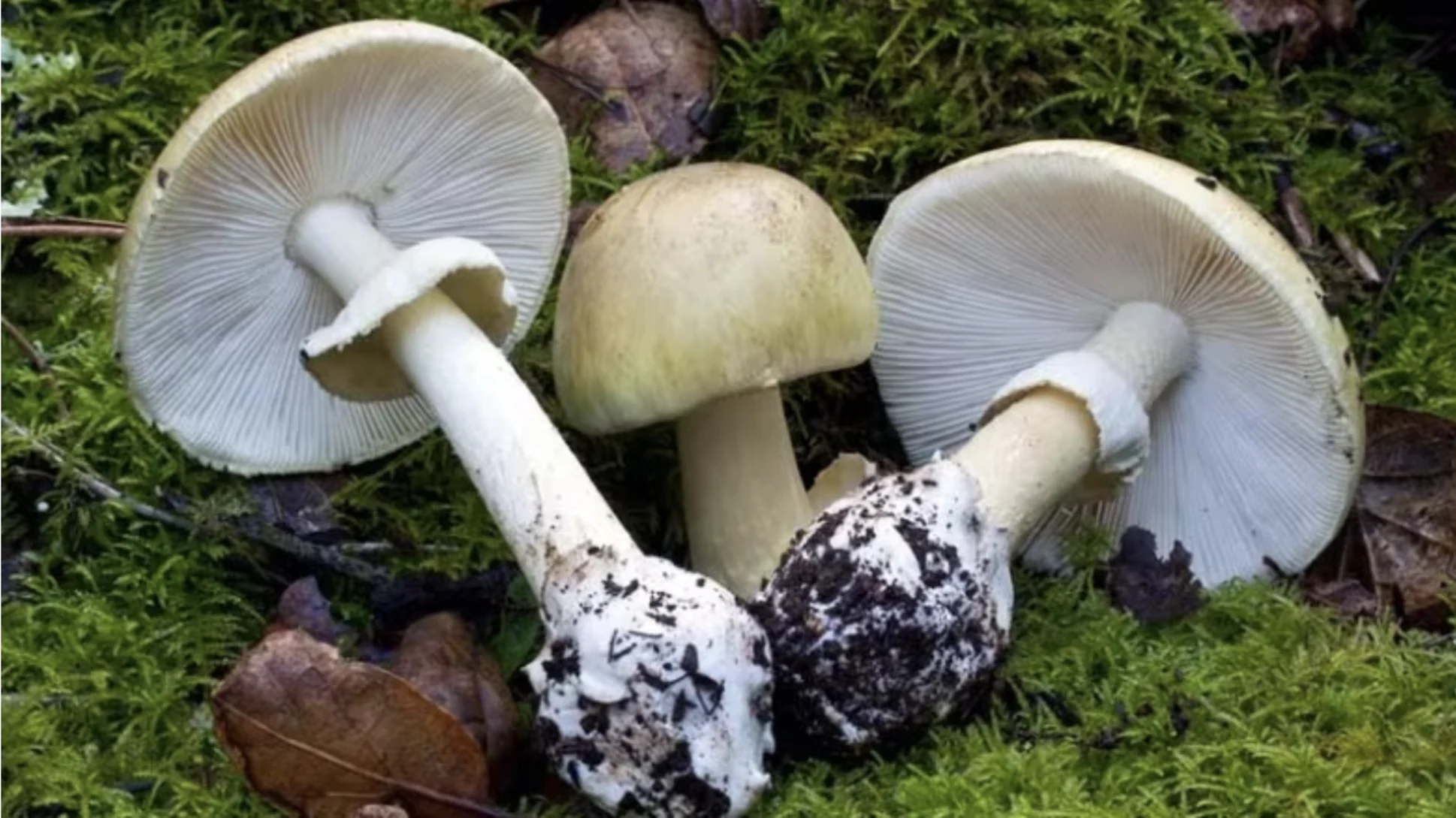
Be warned: watch out for poisonous death cap mushrooms in B.C.
A potentially deadly mushroom that made global headlines recently after the death of multiple people in Australia also grows wild around southern British Columbia, and experts are warning foragers to be vigilant.
Death cap mushrooms, also known as Amanita phalloides, may have been responsible for killing three people and injuring a fourth last week after wild mushrooms were served at a family lunch in Australia's Victoria state.
The highly toxic fungus can also pop up in Canada's westernmost province and has prompted warnings this summer from the B.C. Centre for Disease Control (BCCDC) and two Vancouver Island communities.

Michael G. Wood/B.C. Centre for Disease Control: Death cap mushrooms (Amanita phalloides) have been found in Vancouver, the Fraser Valley, Vancouver Island and the Gulf Islands. (Michael G. Wood/B.C. Centre for Disease Control)
RELATED: Toxic or not? Mushroom foraging 101
The death cap is not native to B.C. and was first spotted in the Mission area in 1997, according to Paul Kroeger, founding member of the Vancouver Mycological Society. The first reported sighting in Vancouver was in 2008, and since that time, Kroeger said over 100 sightings have been documented in the Lower Mainland.
The mushroom has also since been seen on Vancouver Island and the Gulf Islands. It is believed the fungus arrived years, if not decades earlier, on the roots of imported trees.
"One of the biggest concerns we have is that this death cap mushroom grows primarily in urban areas and areas with high contact with humans because they have been introduced with tree species native to Europe that have been planted widely in park settings and along city streets," said Kroeger, speaking Monday on CBC's The Early Edition.

Paul Kroeger looks at a mushroom growing from a street tree in Vancouver in December 2021. (Chad Pawson/CBC News)
DON'T MISS: Amid drought, Metro Vancouver residents are showing off their brown lawns
According to the B.C. Drug and Poison Information Centre, an average of 200 calls per year are related to wild mushroom exposures. In 2016, a three-year-old Victoria boy died after eating a death cap found in the downtown area of the city. It is the first recorded death in B.C. from a death cap mushroom.
Less than a month ago, the BCCDC issued an alert asking people to be on the lookout for death caps after a child in the Vancouver Coastal Health Region ate part of one. The amount consumed was small, and the child did not die.
WATCH: Mushrooms are taking over lawns in eastern Canada, expert explains why
In June, the District of Oak Bay issued a warning about death caps growing in the southern Vancouver Island municipality. And in July, farther north on the island, the Town of Comox also alerted residents after a death cap was found near Filberg Park, where many community events take place.
Death cap mushrooms are white with greenish-yellow tinges and grow up to 15 centimetres tall. They have a floppy ring around the stem near the top of the mushroom, and the bottom of the stem sits in a cup-like structure called a volva. Kroeger said in dry conditions, the cap of the mushroom has a metallic, satin-like sheen.

RELATED: Pretty but toxic - Vancouver Island residents warn of invasive plant spreading
The dangerous mushroom can be mistaken for an edible variety, such as puffballs, and Kroeger says the invasive species is here to stay.
"There is no real practical chance of eradicating them," said Kroeger.
If ingested, the death cap contains toxins that damage the liver and kidney and can be fatal. According to the BCCDC, symptoms can appear within six to 12 hours and include cramping, abdominal pain, vomiting, diarrhea and dehydration.
Kroeger says if you suspect poisoning, call the B.C. Drug and Poison Information Centre immediately at 604-682-5050 or toll-free at 1-800-567-8911. Keep a sample of the mushroom for testing.
Kroeger also recommends contacting your local mycological society or the University of British Columbia if you spot a death cap. They are not toxic to the touch and should be removed before landscaping so the spores do not spread, but wear gloves and wash your hands thoroughly afterward.
This article was originally published for CBC News. Contains files from The Early Edition and The Associated Press.






